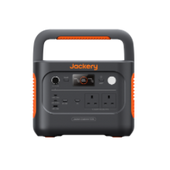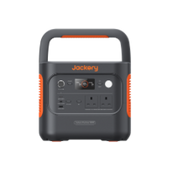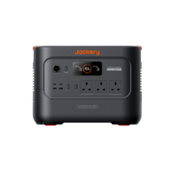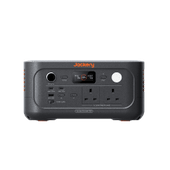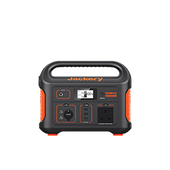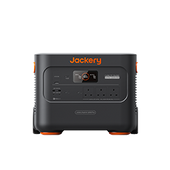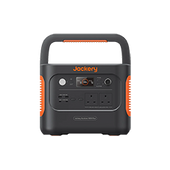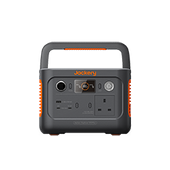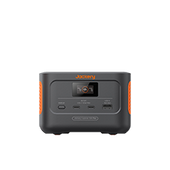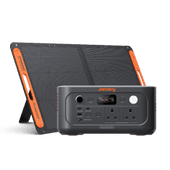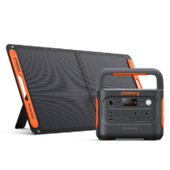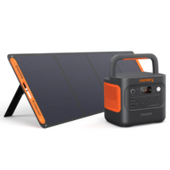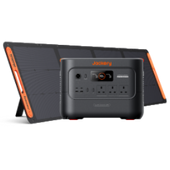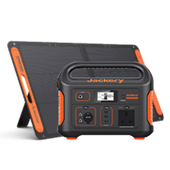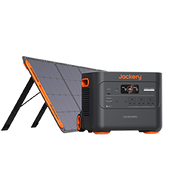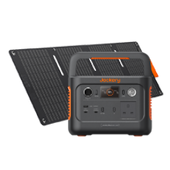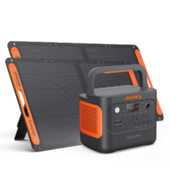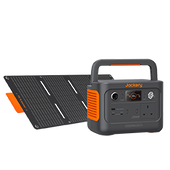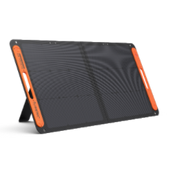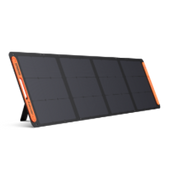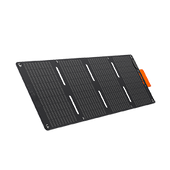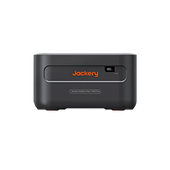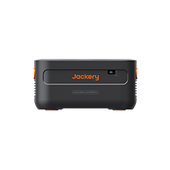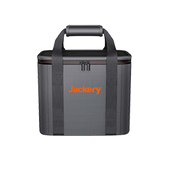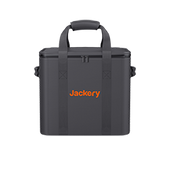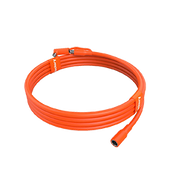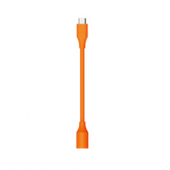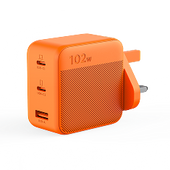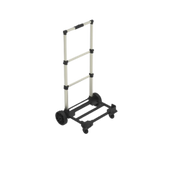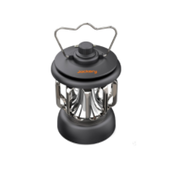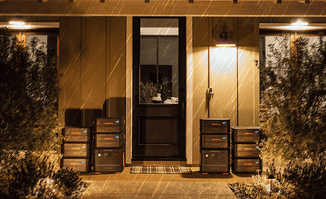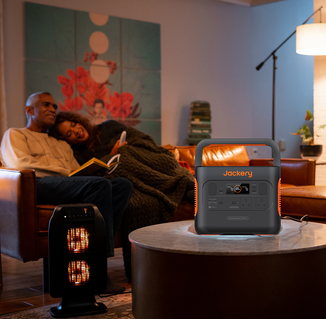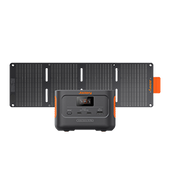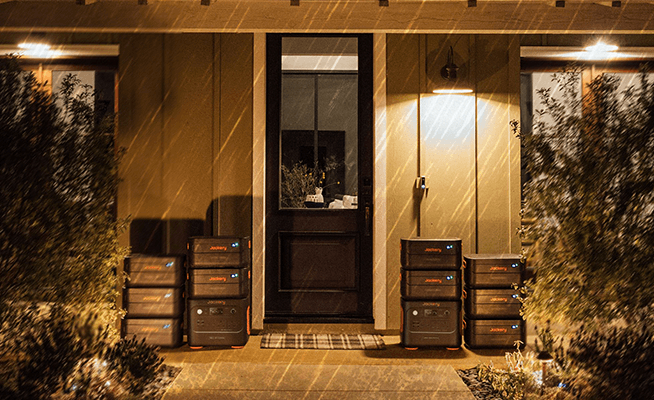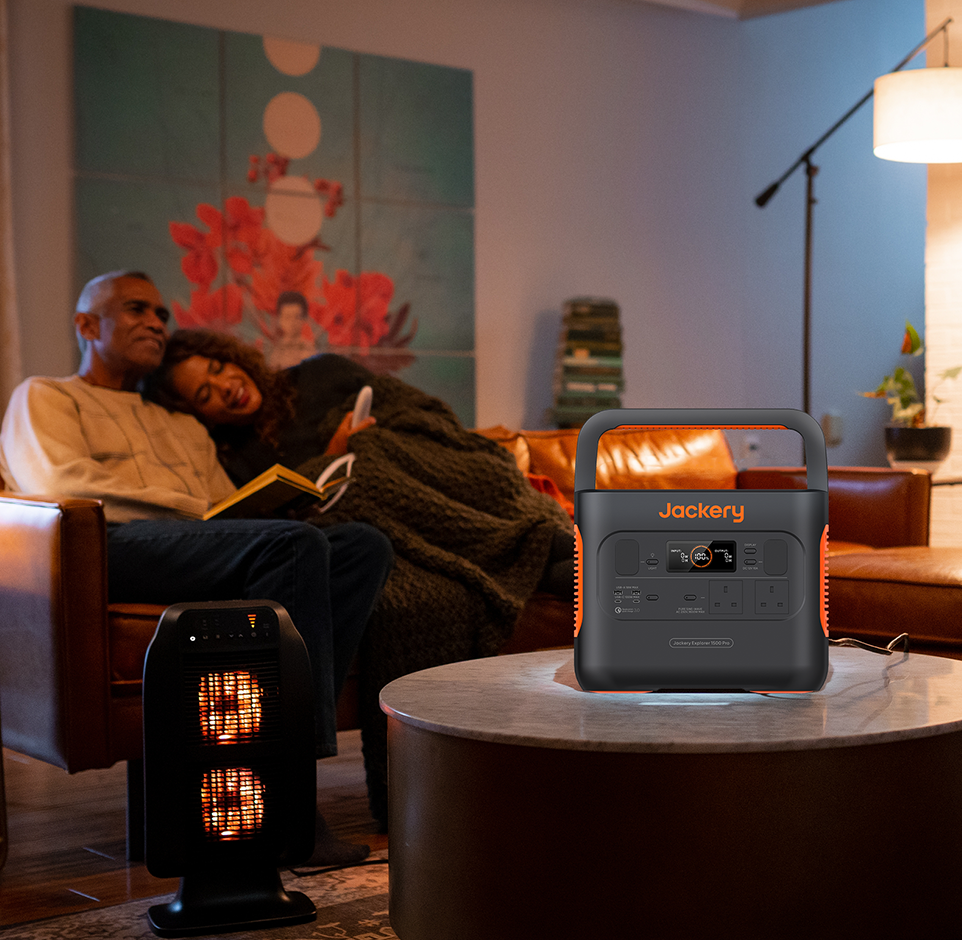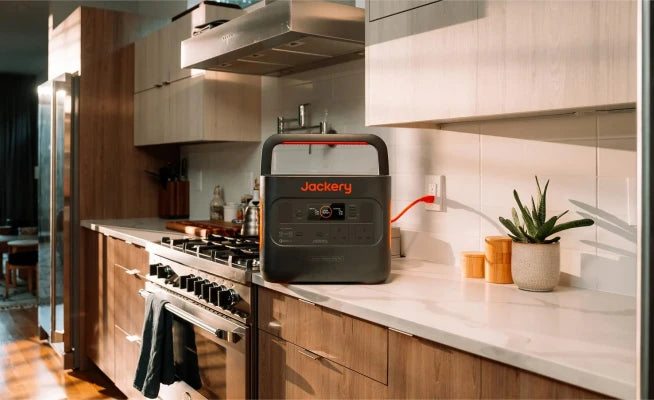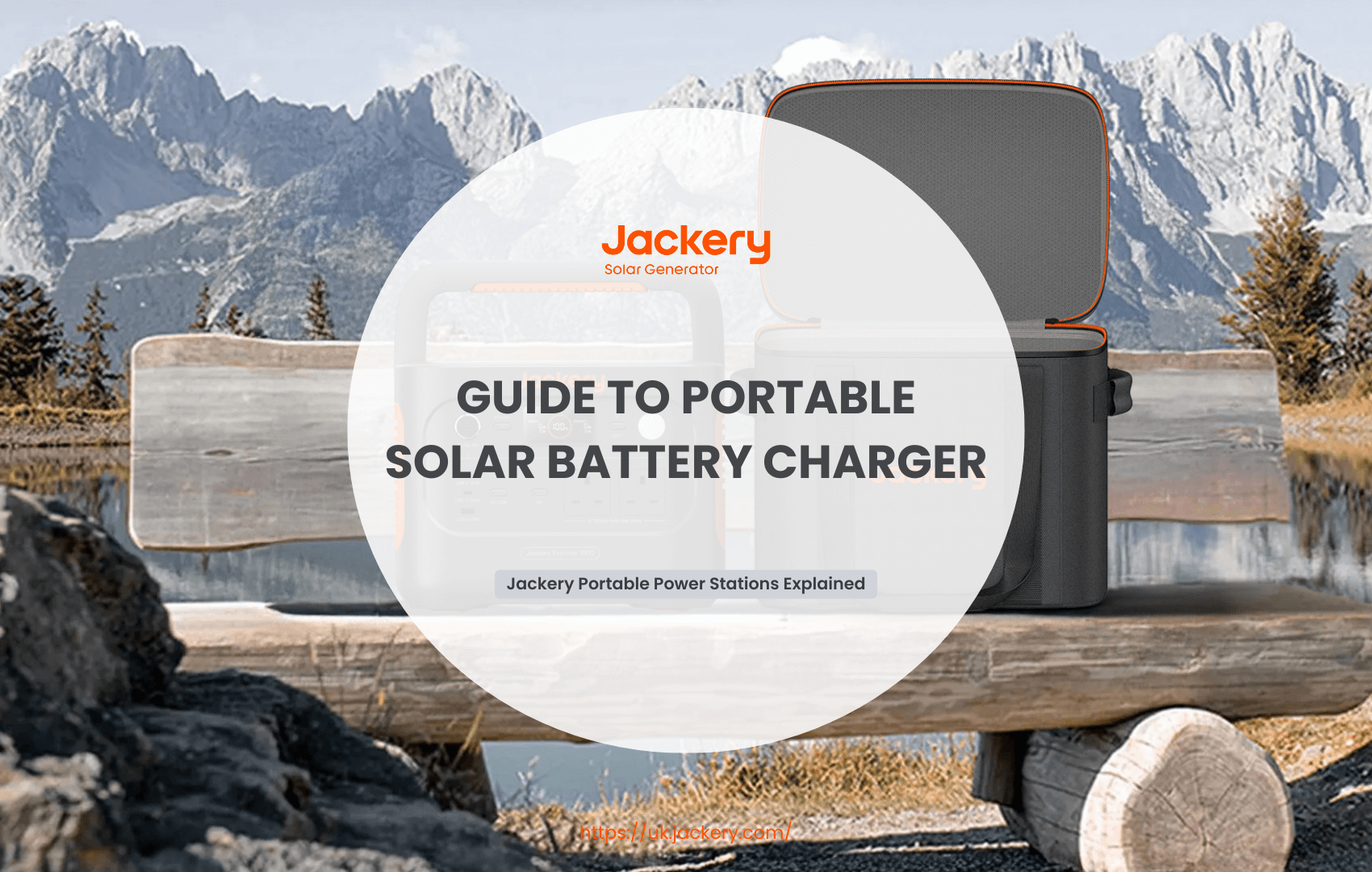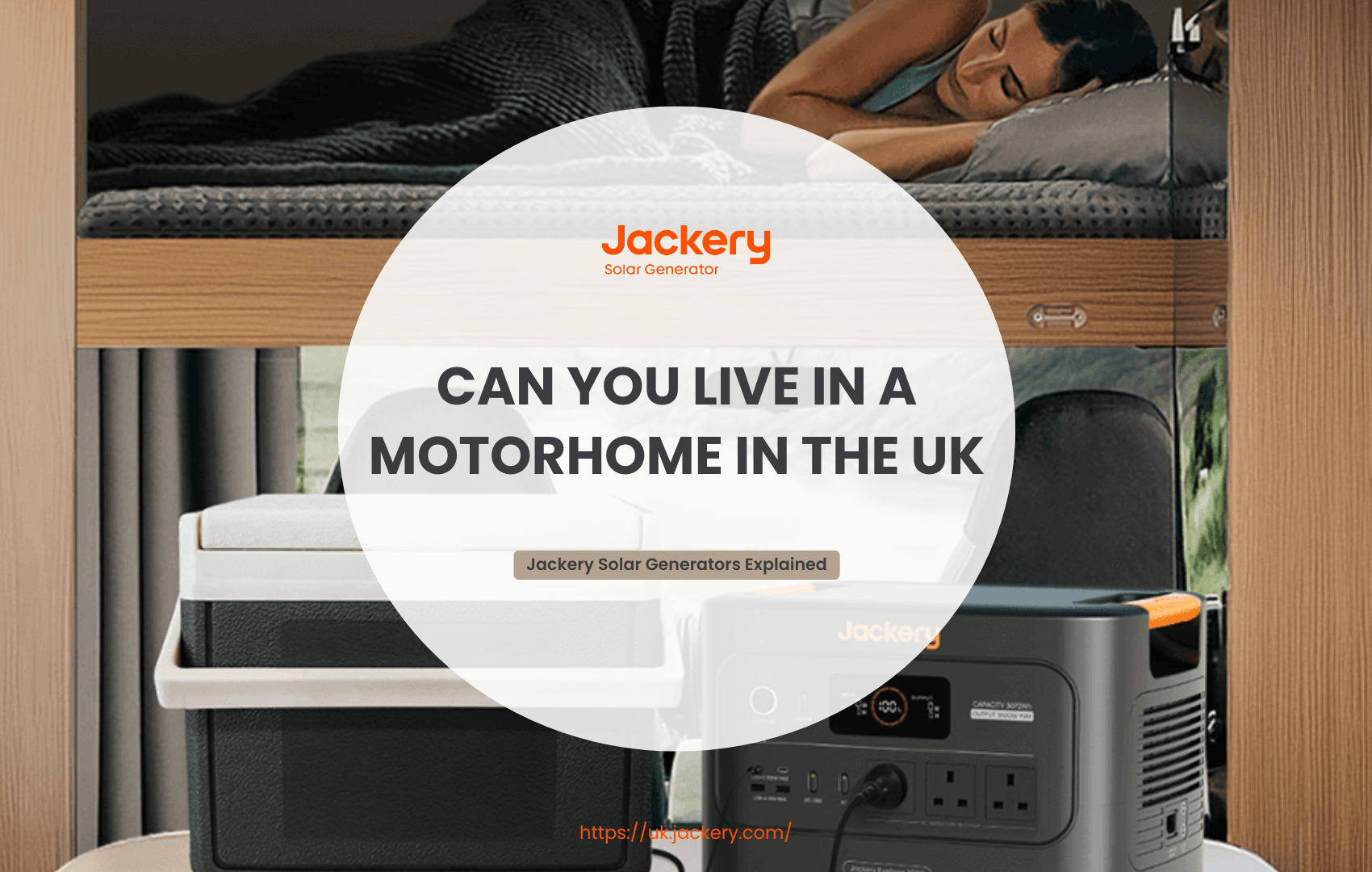It's essential to keep connected in today's fast-paced world. A portable solar battery charger is an excellent method to charge your mobile devices on the road without harming the environment. These chargers are great for outdoor activities and working from home, especially in the UK. They give you reliable power whether you're hiking in the Lake District, going to festivals, or just getting to work every day.
This comprehensive guide covers how portable solar chargers work, their ideal applications, the various types available, and specific safety considerations related to the UK's weather conditions. You may have electricity that lasts anywhere and anytime if you know how to choose and use these gadgets.
Additionally, choosing a Jackery Portable Power Station as a portable solar battery charger is a popular option for several reasons, stemming from the brand's reputation for ease of use, reliability, and its integrated system design.
|
Key Takeaways: |
|
How Does a Solar Battery Charger Work?
A portable solar battery charger converts sunlight into usable electricity, allowing it to charge and power small devices. These systems are designed to operate independently of the grid, utilising simple components that can effectively gather, store, and distribute solar energy. These chargers are a great way to generate renewable energy immediately or store it for later use, whether you're camping, off-grid, or experiencing a power outage.

Photovoltaic Panels Capture Sunlight
When sunlight strikes photovoltaic (PV) panels comprised of monocrystalline or polycrystalline silicon, the solar charging process begins. These panels use the photovoltaic effect, which involves solar cells absorbing photons and releasing electrons to generate an electric current. Portable chargers utilise compact, foldable, or rigid panels that work effectively in both direct and indirect sunlight.
The stronger the intensity of sunshine, the more power is generated, though many models can perform even in gloomy weather. Some panels additionally have a built-in solar controller that adjusts the voltage and current sent to connected devices.
Direct Device Charging
Most portable solar chargers let you plug your gadget directly into a USB port or a DC output. The solar panel sends the electricity it generates directly to the device, which charges it immediately. This solution is ideal for anyone who wants to keep their phones, tablets, or cameras charged throughout the day, provided there is sufficient sunlight. Some chargers utilise innovative technology to determine the exact amount of power your gadget requires and adjust the output accordingly. This stops overcharging and overheating.
Battery Integration for Energy Storage
Many solar battery chargers include a built-in battery pack that saves the electricity generated throughout the day. When sunlight is not accessible, such as at night or during overcast weather, you can use the stored energy to charge your gadgets. The battery functions as a power bank, with the amount of energy it can hold commonly measured in mAh or Wh. The higher the battery capacity, the more gadgets you can charge before needing to recharge the battery using solar or USB power.
Some systems separate the solar panel and battery unit, allowing you to place the panel in the sun while keeping the battery safe indoors or in a shaded region. The integrated systems are ideal for travel, emergencies, or camping, as they provide continuous access to energy.
Charge Controllers and Voltage Regulation
Many solar chargers come with a charge controller that protects your devices and batteries. This part controls the flow of electricity between the solar panel, battery, and gadgets that are linked to it. It ensures that the system operates at safe voltage and current levels. It protects against overcharging, deep discharge, and short circuits. Some current solar chargers even include MPPT (Maximum Power Point Tracking) controllers, which enhance charging efficiency by adjusting the input based on solar intensity.
Multiple Output Options for Compatibility
Most solar battery chargers feature multiple ports, including USB-A, USB-C, and DC outputs, allowing you to charge multiple items simultaneously. Some models incorporate wireless charging pads or quick-charge protocols, allowing them to charge a wide range of devices, including cell phones, action cameras, and power banks. They can hold a wide range of equipment, which is extremely useful when travelling or in an emergency.
Best Uses for Portable Solar Chargers in the UK
In the UK, a portable solar battery charger is quite helpful in many real-life situations, such as when you go camping in the countryside or when the power goes out for no apparent reason.
UK customers are turning to solar chargers as a reliable, efficient, and long-lasting solution to stay charged anywhere, due to the unpredictable weather and a growing need for off-grid energy options. These devices are fantastic for travel and emergencies, but they also help you live and work in an eco-friendly way.

Outdoor Activities: Camping, Hiking, and Festivals
If you enjoy camping, hiking, or attending music festivals in the UK, such as Glastonbury, you'll need a portable solar charger. They are small and light enough to put in a backpack, and their foldable shape makes them easy to set up at campsites or on the route. Users don't have to worry about locating power outlets in remote areas because they can charge their smartphones, GPS devices, and cameras directly from solar panels or built-in batteries.
Many campers in the UK rely on portable solar systems as part of their essential gear, particularly in national parks and rural areas where electricity is unavailable. One significant benefit is that you can charge during the day and save power for use at night. This is especially helpful in the summer in the UK when the days are longer. Some chargers can even operate in adverse weather conditions, which is typical in the UK.
Off-Grid Living and Remote Working
Increasingly, people are utilising solar chargers to live off the grid or establish a part-time remote office, particularly in cabins, trailers, or narrowboats in rural areas. These systems can power equipment that consumes relatively little energy, such as LED lights, routers, or smartphones. This makes them ideal for weekend getaways or remote workstations in areas with unreliable power grids. They help people rely less on traditional power systems and provide a backup option when the power goes out.
A portable solar charger provides remote workers who travel between cities or prefer to work outside with a steady source of power, eliminating the need to rely on cafés or charging stations. People in the UK who use campervans or motorhomes particularly appreciate these systems, as they are quiet and quick to set up, unlike generators that can be noisy.
Emergency Preparedness for Power Outages
Due to concerns about the energy supply and the increasing frequency of storms, which are damaging local infrastructure, solar chargers are a crucial feature of emergency kits in the UK. If the power goes out, you can still stay connected if you have a solar battery charger at home.
This keeps your phones and radios charged, allowing you to communicate with others and receive updates.
They are invaluable when the power goes out in the winter or when repairs can take longer in remote locations.
As the UK works to improve its grid infrastructure, families are also exploring hybrid systems that incorporate solar energy as part of their daily backup plans.
Travel and Daily Use
Solar battery chargers can be used in more than just harsh conditions; they can also be helpful in ordinary city living. Many people in the UK who commute or attend school use portable solar banks to charge their phones and headphones while on the go. They work with almost all portable electronics because they have USB outputs. They are also light enough to fit in a work bag or school backpack.
Some solar chargers can be attached to the exterior of a rucksack, allowing them to collect solar energy while you walk, bike, or drive to work. This makes them a good choice for people who want to use less energy during the day.
Different Types of Solar Battery Chargers
There are many different types of portable solar battery chargers to choose from, depending on your energy needs, the weather, and the devices you want to charge.
UK consumers can now choose from an increasing number of valuable and efficient charging choices, such as simple solar panels with USB ports and more advanced gadgets with built-in batteries and smart charge controllers. You can choose the finest solution for your needs, whether they are for outdoor sports, emergency power, or everyday phone charging, by knowing the various options available.

Panel-Only Solar Chargers
These are the most basic type of solar battery chargers, consisting of just solar panels and one or more USB or DC outlets. They directly convert solar energy into electricity and charge devices in real-time, as long as sunlight is present. This style is light, easy to pack, and suitable for day outings, camping, or trekking when there is enough daylight.
They're designed for on-the-go use, with many being foldable or semi-flexible, making them excellent for backpacking or travel. Some panel-only variants contain innovative chip technology that adjusts charging power based on sunshine conditions and device specifications.
Solar Power Banks
Solar power banks combine a small solar panel with a rechargeable battery, providing the benefit of storing energy for later use. These are especially beneficial for UK users who may not always have access to direct sunshine and must save electricity for overcast days or nighttime use. They commonly feature USB ports, LED indicators, and, in some cases, wireless charging capabilities.
Because solar panels on power banks are often modest in size, they are best suited for gradually charging the internal battery over time. They frequently have the option to recharge via USB from the mains as needed. These are suitable for regular users, commuters, and occasional travellers seeking a backup energy source.
Foldable Solar Chargers with External Battery Packs
This setup features foldable solar panels and a separate power bank with ample capacity. This gives you the best of both worlds: the ability to charge your devices directly and store energy for later use. During the day, the solar panels can be pulled out to harvest electricity, while the battery remains safe.
This design offers greater versatility and capacity, making it ideal for charging a wide range of devices, including smartphones, tablets, cameras, and even drones, during extended outdoor excursions. UK campers and festival-goers frequently rely on this technology to stay powered during multi-day events without access to mains energy.
Solar Charging Kits for Camping or RV Use
These packages, designed for more demanding applications, include huge, high-efficiency panels, several connectors, and powerful external batteries. Some kits feature charge controllers and inverter choices to power 12V appliances or small AC gadgets, making them ideal for campervans, motorhomes, and boats.
These are popular among users who live wholly or partially off-grid, or who take frequent road journeys across the United Kingdom. Despite being larger than other types, they provide dependable off-grid power for lighting, communications equipment, and low-wattage devices.
The Jackery Portable Power Stations are designed to work flawlessly with Jackery Solar Panels. The panels often have proprietary connectors that plug directly into the power station's input ports, eliminating the need for complex wiring or separate charge controllers. This "plug-and-play" simplicity is a significant advantage for beginners and those who want a hassle-free setup.
Integrated Solar Charger Backpacks
Some backpacks have solar battery chargers built in, allowing you to generate and store electricity while walking or travelling. These have flexible solar panels on the back panel, a small power bank within the bag, and connections for direct charging.
They are great for students, hikers, and bikers who wish to charge their gadgets throughout the day without having to stop and set up. With the UK's active outdoor and cycling lifestyle, this is a handy alternative for hands-free mobile charging.

Portable Solar Batter Chargers from Jackery
Choosing a Jackery Portable Power Station as a portable solar battery charger is a popular choice for several reasons, stemming from the brand's reputation for ease of use, reliability, and an integrated system design. While there are many competitors in the market, Jackery has carved out a significant niche, particularly for its user-friendly approach.
The Jackery Portable Power Stations are designed to work flawlessly with Jackery Solar Panels. The panels often have proprietary connectors that plug directly into the power station's input ports, eliminating the need for complex wiring or separate charge controllers.
The system is engineered to maximise solar charging efficiency. The power stations feature a built-in Maximum Power Point Tracking (MPPT) charge controller, ensuring that even on cloudy or partially shaded days, the solar panels convert as much sunlight as possible into storable energy.
Jackery Explorer 1000 v2
Choosing the Jackery Explorer 1000 v2 as a portable solar battery charger is an excellent choice for a wide range of users, including campers, van-lifers, and homeowners seeking emergency backup. It hits a sweet spot between capacity, power, and portability, making it a highly effective and user-friendly system.

Optimal Balance of Capacity and Portability: The Explorer 1000 v2 features a 1,070Wh battery, providing sufficient capacity for a weekend trip or during a power outage. It can run a wide range of essential devices, including mini-fridges, laptops, lights, and phones. Crucially, it provides this power without the bulk and weight of larger power stations. At just over 23.8 lbs, it is manageable for one person to carry and transport, making it truly "portable."
Fast and Efficient Solar Charging: It supports up to 400W of solar input, which is a substantial amount for a power station of its size. This means you can connect multiple Jackery SolarSaga panels to recharge the unit quickly and efficiently. Under optimal sunlight conditions, it can be fully recharged in as little as 4 hours using two SolarSaga 200W solar panels.
Built-in MPPT Technology: The unit has a built-in Maximum Power Point Tracking (MPPT) charge controller. This technology automatically optimises the charging process to draw the most power possible from your solar panels, even in less-than-ideal conditions, such as partial shade or on a cloudy day.
Plug-and-Play Simplicity: Unfold the solar panels and plug them directly into the power station. There's no need for separate charge controllers, complicated wiring, or technical knowledge, making it an ideal choice for beginners.
Real-Time Monitoring: The on-unit display and the Jackery app provide real-time data on the solar input, output, and remaining battery life. You can see exactly how much power your panels are generating and how long it will take to charge the unit fully.
Jackery Explorer 500 v2
Choosing the Jackery Explorer 500 v2 as a portable solar battery charger is an excellent decision for a specific type of user: the individual or small group who needs a reliable, lightweight, and efficient power source for shorter trips or as a small-scale home backup. It's the ideal choice when a larger, heavier power station would be overkill.

Ultra-Lightweight: The Explorer 500 v2 weighs only 12.57 lbs (5.7 kg). This is a massive advantage for hiking, camping, or any situation where you need to carry your gear. You can easily lift it with one hand, and its compact size means it won't take up much space in your car, RV, or tent.
Sufficient Capacity: With a 512Wh capacity and a 500W output, it's the perfect size for charging essentials over a weekend. It can power a mini-fridge for hours, charge multiple phones and laptops, or run camping lights and a small fan. It's a sweet spot that provides enough power for convenience without the unnecessary bulk of a larger unit.
High Solar Input for its Size: The Explorer 500 v2 is designed to be highly effective at solar charging. When paired with Jackery SolarSaga 200W panels, it can be fully recharged in as little as 2.8 hours. This makes it easy to replenish the battery's power with just a day's worth of sunlight.
Intelligent Charging: The unit features smart charging with "Solar Priority" mode. This means that if both solar panels and an AC wall outlet are connected, the power station will prioritise the free, clean energy from the sun. It will only top up from the grid when necessary, which helps you save on your electric bill.
Built-in MPPT Controller: Like all Jackery units, it has a built-in Maximum Power Point Tracking (MPPT) charge controller. This technology ensures that even when the sunlight is not ideal, you are still maximising the power you get from your solar panels.
How to Choose the Right Portable Solar Charger?
When selecting the best portable solar battery charger for your needs, consider more than just the most powerful one.
It's essential to match the charger's capabilities to how and where you plan to use it in the UK, where the amount of sunshine can vary, and people use it for everything from everyday commutes to wild camping. If you know what characteristics are essential, you can avoid weak settings and obtain an energy solution that works all year.

Step 1: Consider Your Power Needs
The first step in selecting a portable solar charger is to determine which gadgets you will be charging and how frequently. If you only need to charge your phone or wireless earphones throughout the day, a modest solar power bank with a 5W-10W output may be sufficient.
For more demanding applications, such as charging tablets, DSLR cameras, or power banks, you'll need a unit with at least 15W-25W or more, depending on your power requirements.
People often use watts (W) to talk about power output.
A higher wattage means faster charging and the ability to work with bigger devices. Some models offer two USB outlets or the ability to charge quickly, allowing for the simultaneous charging of multiple devices.
Step 2: Choose Between Real-Time Charging vs Stored Power
A solar charger that only works with panels and has USB connections for direct charging in real-time might be sufficient in sunny weather or for short periods. In the UK, where it is often cloudy, it is usually better to use a charger with a built-in or external battery. These hybrid models gather and store energy during the day, allowing you to charge your devices later. They are flexible and reliable. With a big battery and solar panels, you can always get power, even when the weather changes.
Step 3: Panel Size and Portability
Solar chargers range in size and weight from ultra-light, tiny panels that fit in your hand to big foldable devices designed for group travel or off-grid deployments. If you're trekking or backpacking, look for small, foldable solar panels that can be easily attached to your luggage and used on the go.
Larger panels, with higher output and faster charging times, are ideal for base camps, festivals, and campervans. Weight, size, and whether the panels are stiff or flexible all influence their suitability for your intended use.
Step 4: Look for Durability and Weather Resistance
Because many users rely on solar chargers outside, durability is critical. Look for designs that are rugged, waterproof, and dustproof, and can resist unexpected rain or harsh use.
Many solar panels feature robust polyester or ETFE coatings and water-resistant USB connectors, making them ideal for UK camping and unpredictable coastal weather conditions. Some variants feature reinforced seams, carabiner loops, and protective flap coverings, all of which improve usability in harsh outdoor conditions.
Step 5: Check Compatibility and Charging Ports
Ensure the solar charger you choose is compatible with your gadgets. Most models have USB-A outputs, but some now have USB-C, Quick Charge, or even DC connectors for more versatility. Some devices may charge cameras, drones, and even 12V power stations, but you must first check the voltage and type of connector. Models with multi-device charging options and innovative charging technology that adjust output based on the device plugged in offer greater versatility.
Step 6: Extra Features to Enhance Use
Many solar battery chargers feature convenient additions such as LED power indicators, built-in lamps, magnetic attachments, and digital displays. Others include integrated charge controllers or clever chips, which increase efficiency and protect against overheating, short circuits, and overcharging.
Advanced options include MPPT (Maximum Power Point Tracking) technology, which improves power control in low-light conditions. These features can make a significant impact in the user experience, particularly on lengthy travels or multi-day use.
Do Solar Battery Chargers Work in Cloudy UK Weather?
People often enquire how well a portable solar battery charger works in the UK when it's gloomy or overcast. Because the weather in the UK is usually unpredictable and dreary, it's essential for anyone considering using solar power for their devices to understand how well solar charging works in less-than-ideal sunlight.
Solar Panels Can Still Capture Diffused Light
Even when clouds obscure the sun, solar panels can still capture scattered sunlight and generate electricity. Although the output is lower than that of strong, direct sunshine, many current solar chargers are efficient enough to gather usable energy in typical UK weather conditions.
This implies that on cloudy days, you may have slower charging speeds, but you can still charge your gadgets or replace a battery bank gradually.
Use Battery Storage for a Consistent Power Supply
Because sunlight can be unpredictable in the UK, combining solar panels with built-in battery storage or an external power bank ensures that power is available even when the sky is overcast. Solar chargers with built-in batteries harness energy from available sunshine and enable you to charge your gadgets later, regardless of the weather.
This hybrid technique maximises dependability and usability, making solar charging feasible year-round in the UK.
Ideal Solar Charger Features for UK Weather
Solar chargers intended for UK users frequently prioritise mobility, durability, and efficiency in varied weather conditions. Foldable panels made of waterproof materials and intelligent charge controllers ensure that the system remains functional and safe in all weather conditions.
These features enable users to keep a consistent power supply throughout the year, despite frequent cloud cover and changing seasons.
FAQs
The following are the frequently asked questions about the portable solar battery charger:
1. Do solar portable chargers actually work?
Yes, solar portable chargers do a good job of charging phones, tablets, power banks, and other USB-powered devices, especially when they are in direct sunshine. The size of the panel, the weather, and the battery capacity of the device all affect how quickly it charges.
However, contemporary portable solar chargers utilise sophisticated charging circuits and efficient photovoltaic technology to convert sunlight into usable electricity. Solar chargers can still function on overcast days in the UK, as they can still receive power from dispersed sunlight. This makes them valid for outdoor activities, travel, and emergencies. Charging times, on the other hand, may be longer than when using direct mains electricity.
2. How long will a 100W solar panel take to charge a 12V battery?
The time it takes for a 100W solar panel to charge a 12V battery depends on the battery's size (measured in amp-hours, Ah), the amount of available sunlight, and the panel's efficiency. For instance, a 100W panel in optimal conditions (approximately 5 hours of full sunlight each day) can produce roughly 500 watt-hours of power per day.
This is because a 12V, 100Ah battery (1,200 watt-hours) can hold that much power. In good sunlight, it takes approximately two to three days to charge the battery from an empty state fully. Cloud cover or shade can make this time much longer. Using a solar charge controller makes charging faster and better for the battery.
3. What is the best portable solar-powered charger?
The best portable solar charger for you will depend on what you need it for. Still, many of the better ones feature monocrystalline panels that are highly efficient, built-in battery banks, multiple USB ports, weather resistance, and innovative charging technologies.
Jackery is a well-known brand in the UK that produces portable power banks that function effectively. For camping or hiking, small, lightweight solar chargers with 10W to 30W panels, paired with a power bank, are ideal. For longer excursions or higher power requirements, larger installations with 100W or more panels are recommended. For optimal performance, look for models equipped with MPPT controllers.
4. How long does a solar portable charger last?
A solar portable charger, when properly maintained, usually lasts between 3 and 5 years; however, some high-quality models can last up to 10 years. The longevity relies on factors such as the quality of the build, the type of panel, the battery capacity (if it has one), and the extent of exposure to the environment.
Cleaning solar panels regularly, keeping the charger dry and away from extreme temperatures, and storing the equipment properly while not in use are all things that can help it last longer. The rechargeable batteries in the gadget may wear out with time and need to be replaced after a few years.
Final Thoughts
A portable solar battery charger is a flexible and eco-friendly way to keep your devices charged in the UK's many different locations. Cloud cover and other weather conditions can slow down charging speeds, but advancements in panel technology and battery storage ensure that the system operates efficiently throughout the year.
Choosing the correct charger with the right power output, durability, and compatibility is essential, whether you need to keep your phone charged while you're outside or have backup power in case of an emergency. You can safely use solar energy for your gadgets by following safety precautions and maximising your exposure to sunlight. This will help you rely less on traditional power sources and live a more environmentally friendly life.

